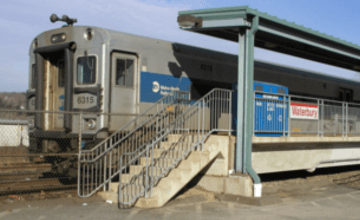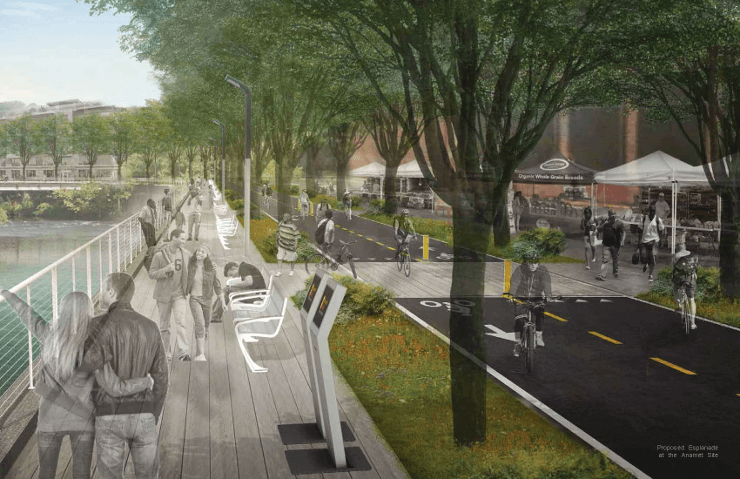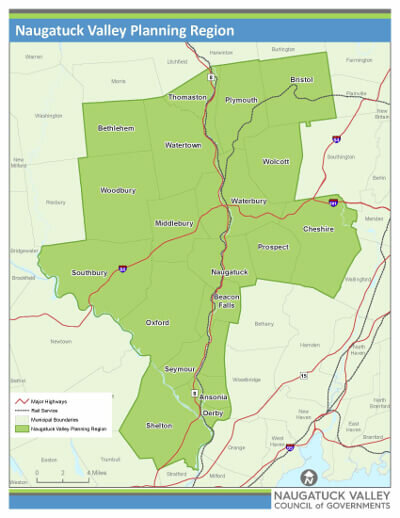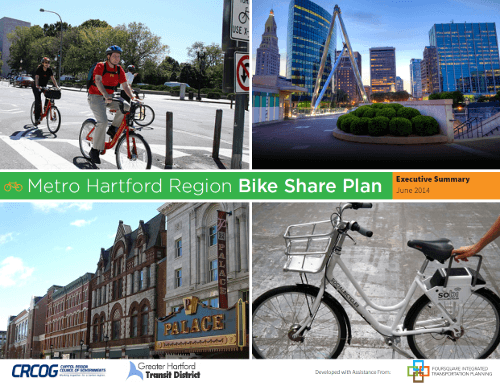NVCOG Executive Director Search
Draft 2015-2018 Transportation Improvement Program Released
Draft 2015-2018 Transportation Improvment Program Released
COGCNV has released a draft of its 2015-2018 Transportation Improvement Program (TIP) for public comment. The Transportation Improvement Program (TIP) is a four-year funding schedule of transportation improvement projects paid for by federal, state, and local funding sources. Highway and road improvements, bridge repairs, commuter services, and bus and train operating and capital funds are included in the TIP. The Connecticut Department of Transportation (CT DOT) is also seeking public comments on its draft Statewide Transportation Improvement Program (STIP): 2015-2018.
Draft COGCNV TIP: 2015-2018 (PDF) >
Draft CTDOT STIP: 2015-2018 >
Legal Notice (PDF) >
Air quality conformity assessments for Ozone and Particulate Matter 2.5 (PM2.5) were conducted by the Connecticut Department of Transportation to ensure that future transportation projects meet air quality standards set by the United States Environmental Protection Agency (EPA). Full air quality assessments can be found at the links below:
Air Quality Assessment for Ozone (PDF) >
Air Quality Assessment for PM2.5 (PDF) >
Public Comment Period
The Council of Governments of the Central Naugatuck Valley (COGCNV) will hold a public meeting for the Central Naugatuck Valley Region’s 2015-2018 Transportation Improvement Program (TIP) and Air Quality Conformity Assessments on Tuesday, September 30, 2014 from 5:00 P.M. to 7:00 P.M. The public is encouraged to ask questions and offer comments and suggestions about projects in the TIP. The COGCNV office is located at 49 Leavenworth Street, Suite 303, in Waterbury. Written comments can also be sent to COGCNV, 49 Leavenworth Street, Suite 303, Waterbury, CT 06702, or by email to pgallagher@cogcnv.org. Public comments will be accepted until October 22, 2014.
Request for Bids for Snow and Ice Control Materials Posted
The COGCNV has posted a Request for Bids for Snow and Ice Control Materials.
For more information, please go to the For Vendors page.
Air Quality Conformity Assessment Public Comments
Public Comments on Air Quality Conformity Assessments
The Council of Governments of the Central Naugatuck Valley (COGCNV) is seeking public comments related to air quality assessments for its 2015-2018 Transportation Improvement Program and Long Range Plan. Air quality assessments have been conducted on upcoming transportation projects to ensure that they meet the Ozone and PM 2.5 air quality standards established by the US Environmental Protection Agency. The full reports of the assessments, which were conducted by the Connecticut Department of Transportation (CT DOT), can be found below.
CT DOT Ozone Report (PDF) >
CT DOT PM 2.5 Report (PDF) >
COGCNV Legal Notice (PDF) >
A thirty (30) day public comment period has been established beginning on September 17, 2014 and ending on October 17, 2014. A public meeting will be held on Tuesday, September 30, 2014 from 3:00 PM to 5:00 PM at the COGCNV offices at 49 Leavenworth Street, Suite 303, Waterbury CT 06702. Comments can also be submitted in writing or via email to Pat Gallagher, Senior Planner at pgallagher@cogcnv.org.
TIGER grant heralds a big stride for city
By Samuel Gold
The chief elected officials of the Council of Governments of the Central Naugatuck Valley (COGCNV) congratulate Waterbury on its successful application to the U.S. Department of Transportation’s Transportation Improvement Generating Economic Recovery (TIGER) grant program. In March, COG voted unanimously to partner with the city on its Waterbury Active Transportation Economic Resurgence (WATER) project, and is excited to support the city on what will be a transformative project.
The project will extend Waterbury’s walkable, mixed-use downtown, increase transit accessibility, and redefine the city’s image around an enjoyable and attractive riverfront greenway. Investment in these improvements will support the city’s economic recovery and the larger regional economy. A reimagined and redeveloped Freight Street corridor will provide space for new businesses, including new medical offices near Waterbury’s hospitals. The corridor also will provide opportunities for development oriented to Metro-North commuter-rail service and the CTFastrak station.
No other location in the Central Naugatuck Valley region has the unrealized development potential of the Freight Street corridor. It is bounded by the region’s most significant transportation assets: the Interstate 84/Route 8 interchange, Metro-North terminal and the future Naugatuck River Greenway. The corridor is underutilized because it lacks basic connections to the transportation infrastructures that surround it.
The WATER project will construct the long-planned Jackson Street/Thomaston Avenue connector, and will connect the Freight Street corridor to West and South Main streets and to the region’s expressway network.
The up-and-over pedestrian bridge connecting to Library Park, and complete street retrofit of Freight and Meadow streets, will provide the pedestrian and bicycle connections needed to make transit-accessible development possible in the Freight Street corridor.
The most exciting and ambitious element of the WATER project is the Naugatuck River Greenway. With the extension of the Naugatuck River Greenway into the Freight Street corridor, this abandoned area, which no one thinks about or ventures to, becomes a real place that is desirable and special. The multi-use greenway trail will provide Waterbury residents and visitors a safe place to walk, bicycle, and access the now-clean Naugatuck River. As planned connections to neighborhoods and Naugatuck, Watertown, and Thomaston are completed, it will become an alternative transportation commuter facility as well.
As a partner in the WATER project, the COG will support the city with technical and administrative assistance, and ensure the coordination of Waterbury’s project with local, regional, state and federal transportation planning, design and capital projects.
This is an exciting time for Waterbury and the region. As Waterbury’s rejuvenation efforts achieve fruition, COGCNV is joining with six neighboring Naugatuck Valley municipalities to form a new, larger, and more capable Naugatuck Valley Council of Governments. We look forward to helping Waterbury and the Region realize the promise of the WATER project and the resurgence of the Naugatuck Valley.
Samuel Gold is executive director of COGCNV.
For more information, please visit the City of Waterbury WATER Project Information Page.
NVCOG Off to a Great Start
BY ED EDELSON AND KURT MILLER
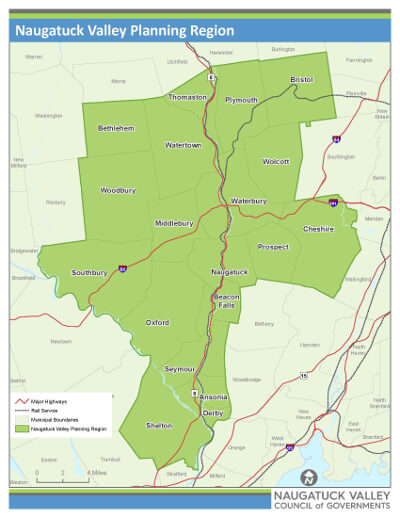
Following certification by the Connecticut Office of Policy and Management (OPM), the newly formed Naugatuck Valley Council of Governments (NVCOG) held the first meeting of our municipal chief elected officials Aug. 22 at Hop Brook Lake in Middlebury. As chairmen of the current councils of governments covering the Naugatuck Valley area, we believe this step to align the 19 cities and towns around the urban center of Waterbury provides the best opportunity for all of our communities to combine resources, and bring significant new investment and cost savings to each of our communities.
With a population of 448,738, the council brings together our common interests in highway and rail transportation, redevelopment of vacant brownfields and the revitalization of our riverfront downtowns. Our smaller suburban communities will benefit equally by this regional approach to economic development, and the ability to jointly deliver services at a scale that is more cost efficient for all of our taxpayers.
The fact Mike Donnarumma, district superintendent of operation services for Metro-North Railroad, and James Redeker, commissioner of the state Department of Transportation, asked to attend this meeting demonstrates that others share this view.
NVCOG will replace the Council of Governments Central Naugatuck Valley and the Valley Council of Governments, the current regional planning organizations. In addition, two towns from the Central Connecticut Council of Governments, Bristol and Plymouth, are part of the NVCOG. The new organization will serve five cities, 13 towns and one borough over 420 square miles, with 2,965 miles of roads.
![]()
![]() As the respective chairmen of the two existing councils, we are enthusiastic about the possibilities of this larger region. We believe it will bring more focus to our transportation needs, which are critical to the future quality of life of our communities. We also are encouraged about the prospects of providing shared services, enabling us to take advantage of the economies of scale of a larger organization. Although our two current organizations have done high-quality work over the past four decades, we recognize they each have had different strengths and areas of focus. Bringing those strengths and experience together is a challenge and an exciting opportunity that will provide greater economic benefit to each of our municipalities.
As the respective chairmen of the two existing councils, we are enthusiastic about the possibilities of this larger region. We believe it will bring more focus to our transportation needs, which are critical to the future quality of life of our communities. We also are encouraged about the prospects of providing shared services, enabling us to take advantage of the economies of scale of a larger organization. Although our two current organizations have done high-quality work over the past four decades, we recognize they each have had different strengths and areas of focus. Bringing those strengths and experience together is a challenge and an exciting opportunity that will provide greater economic benefit to each of our municipalities.
The new organization will have its offices in Waterbury at the current location of the Council of Governments of the Naugatuck Valley, where there is adequate space for expansion. It is expected that the staff from the Valley council will be relocated by early 2015.
The formation of the NVCOG was part of an overall effort initiated by the legislature and implemented by OPM about a year ago. Before 2013, the state had 15 regional planning organizations. As a result of volunteer consolidations and the state’s 2014 redrawing of the boundaries of Connecticut’s planning regions, there now are nine regional planning organizations. The next challenge for the state is the consolidation of the Metropolitan Planning Organizations (MPOs), which are the federal regions that plan our transportation systems and jointly allocate federal funds for these projects with the Connecticut Department of Transportation. There currently are eight MPOs in Connecticut, and the direction is to have fewer MPOs with boundaries that coincide with the new councils of governments’ boundaries.
The alphabet soup of regionalplanning and service-delivery entities can be daunting to new mayors, first selectman and citizens, but the need for wider regional cooperation in conducting transportation planning, economic development, water resources and social services cannot be denied. Because of the many small, overlapping regional organizations, Connecticut was unable to take advantage of the economies of scale offered by new technology or be as competitive for federal resources when it came up against the much larger counties and MPOs that prevail across the rest of the United States. No one municipality can prosper unless the whole region moves forward.
At the same time, as first selectmen of small towns, we recognize the importance of maintaining the quality of life that comes from our unique communities. That means carefully choosing what is appropriate to be done on a regional basis versus what should continue to be delivered and controlled at the town level. We expect there will be a vibrant conversation about this in the coming years.
We want to encourage that.
Although we recognize the attractiveness of receiving services on a small-scale, personal level that appeals to our residents, we also recognize there is a high cost to providing many of these services, especially in comparison with the 48 other states that have county-level government.
There are many reasons Connecticut is a high-tax state, but we no longer can afford to ignore the fact many services are delivered at an inefficient and expensive scale.
At the same time, we recognize the importance of our new region’s major cities — such as Waterbury, Bristol and Shelton — as the economic engines. Their economic and social future is critical to all of the surrounding towns. We are all dynamically linked. We also must press our case that all of our communities provide the highly educated workforce that drives the economy. New investment in our transportation connections to other parts of the state are the most important factor in Connecticut’s economic growth. The problems and successes of one are shared by all.
With the start of the new organization, we see many positive possibilities to help all 19 municipalities.
This is an exciting time, and we are optimistic about the future of the new Naugatuck Valley Council of Governments.
Ed Edelson, a Democrat, is first selectman of Southbury. Kurt Miller, a Republican, is first selectman of Seymour. They are co-chairmen of the Naugatuck Valley Council of Governments.
Metro Hartford Region Bike Share Plan Released
COGCNV recently provided funding and technical assistance to a study examining the possibility of introducing a bike share system in the Hartford area, including the City of Waterbury. Led by the Greater Hartford Transit District and the Capitol Region Council of Governments, this study examined the feasibility of bike share across an extensive geographic area stretching south from the Massachusetts state border to the City of Waterbury. The purpose of the plan is twofold: to determine if and where bike share makes sense within the Hartford region and to develop a blueprint for moving forward and implementing bike share. Please visit the Bikes and Pedestrian Studies section to read the reports.
COGCNV Helping Dam Owners Comply With New Dam Safety Regulations
July 18, 2014
NEWS RELEASE
COGCNV Helping Dam Owners Comply With New Dam Safety Regulations
Executive Director Search Consultant RFP – DUE 7/18/14 by 4 pm
The newly identified Naugatuck Valley Council of Governments (NVCOG) will be hiring a new Executive Director. The Formation Committee of NVCOG is looking to hire an executive search consultant to assist in the selection process. Consultants interested in this work should submit their qualifications to the office of the Council of Governments Central Naugatuck Valley. Questions and answers regarding this RFP may be found under the “Vendors” section of the “About Us” tab.

